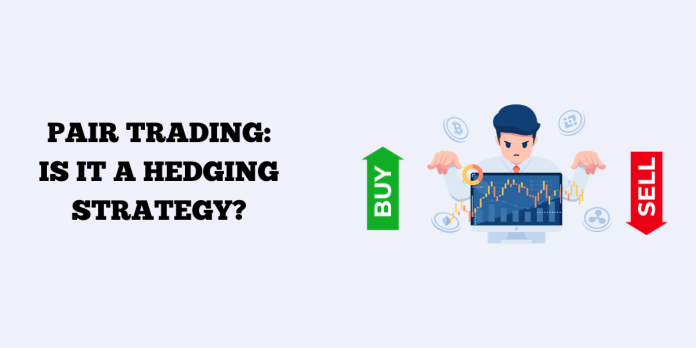Pair trading is a market-neutral trading strategy that seeks to profit from the relative price movements of two securities that have a historically positive correlation. The strategy involves buying the undervalued security and short-selling the overvalued security. The trader profits when the two securities return to their historical correlation.
Hedging, on the other hand, is a risk management strategy that seeks to reduce the risk of an existing position. This is often done by taking an offsetting position in a related security. For example, a trader who is long a stock might hedge their position by short-selling a put option on the stock.
In other words, pair trading is a strategy for profiting from relative price movements, while hedging is a strategy for reducing risk.
So, no, pair trading and hedging are not the same.
What is Pair Trading?
Pairs trading is a market-neutral strategy that takes advantage of the tendency of closely related assets to return to their historical price relationship. This strategy entails finding two securities that are typically highly correlated but have recently moved apart in price.
The trader then takes a long position in the underpriced security and a short position in the overpriced security, profiting when the spread between the two securities reverts to its mean. The primary challenges in pairs trading lie in identifying suitable trading pairs and determining optimal entry and exit points.
Attributes of Pair Trading in Different Contexts:
- Pair Trading Securities – In pair trading, you select a pair of financial instruments or assets to trade. For instance, let’s consider trading Gold and Silver.
- Asset Relationship in Pair Trading – The core concept of pair trading is to capitalize on the relationship between the two chosen assets. In this case, it’s about how the price movements of Gold and Silver are related. When Gold goes up, Silver often follows a similar pattern, and vice versa.
- Deviations in Asset Correlation – Just as a roadblock on the highway can disrupt the flow, external events can affect the correlation between the chosen assets. These events could be economic indicators, geopolitical developments, or other factors impacting gold and silver prices.
- Consequences of Correlation Deviations – When the correlation between the two assets deviates, it’s typically a temporary phenomenon. Like traffic congestion clearing on the highway, the prices of Gold and Silver tend to revert to their usual relationship after the disruptive event subsides.
Example of Pair Trading
The aim is to profit from their relative price movements. For instance, if you observe a historical correlation where Gold is typically more expensive than Silver, you can engage in pair trading with these assets.
Here’s a table representing the daily prices of Gold and Silver over a few trading days:
| Date | Gold Price (Rs. per 10 grams) | Silver Price (Rs. per 1 kg) |
| Day 1 | Rs. 50,000 | Rs. 65,000 |
| Day 2 | Rs. 49,800 | Rs. 64,800 |
| Day 3 | Rs. 50,200 | Rs. 65,500 |
| Day 4 | Rs. 50,500 | Rs. 65,300 |
| Day 5 | Rs. 50,600 | Rs. 65,200 |
In this example, you are looking for opportunities to buy Silver and sell Gold when the price spread widens, and to buy Gold and sell Silver when the spread narrows. The spread is the price difference between the two assets.
Let’s calculate the daily spread and determine when to take trading actions:
- Day 1: Spread = Gold Price – Silver Price = Rs. 50,000 – Rs. 65,000 = – Rs. 15,000. In this case, the spread is negative, indicating that Gold is more expensive than Silver.
- Day 2: Spread = Rs. 49,800 – Rs. 64,800 = – Rs. 15,000. The spread remains constant.
- Day 3: Spread = Rs. 50,200 – Rs. 65,500 = – Rs. 15,300. The spread widens slightly.
- Day 4: Spread = Rs. 50,500 – Rs. 65,300 = – Rs. 14,800. The spread narrows.
- Day 5: Spread = Rs. 50,600 – Rs. 65,200 = – Rs. 14,600. The spread narrows further.
Based on this analysis, you can create trading signals:
- When the spread widens significantly (e.g., Day 3), you may consider buying Silver and selling Gold because Silver is relatively cheaper.
- When the spread narrows (e.g., Day 4 and 5), you may consider buying Gold and selling Silver because Gold is relatively cheaper.
Remember that this is a simplified example, and real-world pair trading involves more sophisticated analysis, risk management, and transaction costs.
Disclaimer: This blog has been written exclusively for educational purposes. The securities mentioned are only examples and not recommendations. It is based on several secondary sources on the internet and is subject to changes. Please consult an expert before making related decisions.


